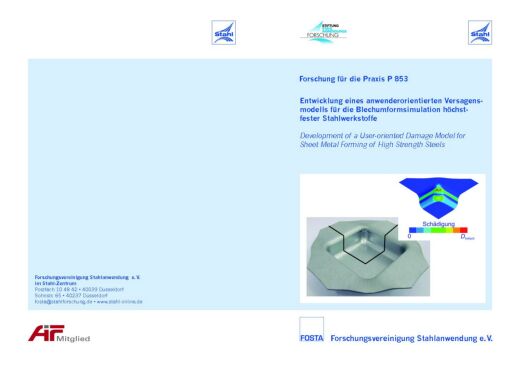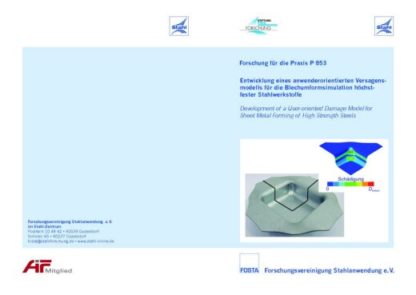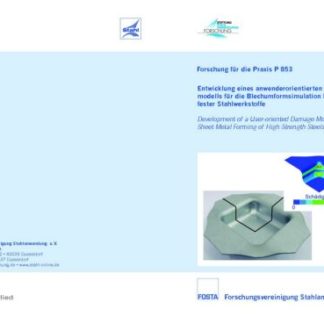Description
P 853 – Development of a User-oriented Damage Model for Sheet Metal Forming of High Strength Steels
Due to increasing requirements in terms of reducing CO2 emissions while providing occupant safety, high and advanced high strength steels such as dual and complex-phase steels are continuously (further) being developed and applied. In consequent of the complex microstructure of these advanced materials, the deformation and failure behavior of these steels has distinct differences from the conventional steel grades.
Specifically, in the aspect of the failure prediction, the weaknesses of conventional methods for assessing the formability arise. Both the forming limit diagram (FLD) and fracture criteria, which considers the accumulation of damage without influencing the material behavior (softening effect), could determine the location and the time of failure precisely. Due to this deficit in the process design, their application is adversely limited despite the great potential of these materials.
As an objective in this research project, the development of the continuum damage model by Lemaitre for sheet metal forming is carried out, in order to achieve described aspects on the basis of numerical analyzes. In addition to the determination of the material damage, hereby the sheet anisotropy and the Bauschinger effect can be taken into consideration. Furthermore, the influence of damage evolution can account for thecurrent state of stress. By considering the phenomena so-called void closure (“Crack Closure”), an improvement of the failure prediction can be achieved at low and negative stress triaxialities.
For the determination of the model parameters, tensile tests and in-plane torsion tests were used in this work. The latter are originally designed for the determination of the yield curve, while higher amount of deformation is achieved. For the identification of the damage parameters, the sample geometry was modified.
Using appropriate test specimens for several grades of material not only the model to could be validated, but also its performance over standard methods such as the FLD are shown for sheet metal forming simulation of high-strength steels.
Because in addition to the attainable accuracy of the effort to determine the material parameters is an essential criterion for the use of a model, in this project, a practical approach for the identification of damage parameters and the optimal implementation of the model taking into account the computing times, modeling strategy, accuracy and robustness of the FEM calculation are developed. This was made available for the project partners especially commercial FE software companies so that the practical application of the developments is ensured.
The research project has been carried out at Institut für Umformtechnik und Leichtbau of Technischen Universität Dortmund. FOSTA has accompanied the research work and has organized the project funding from the Foundation for Steel Application Research.
Only available in german language.
Authors:
A. E. Tekkaya, C. Soyarslan, K. Isik, M. Doig
Published in:
2014




